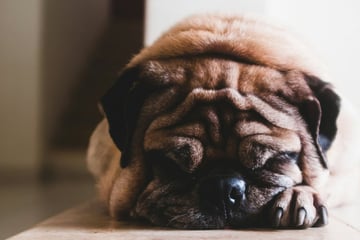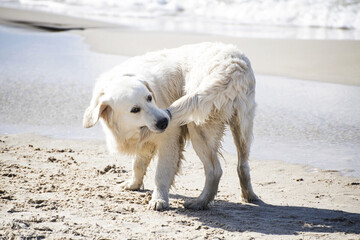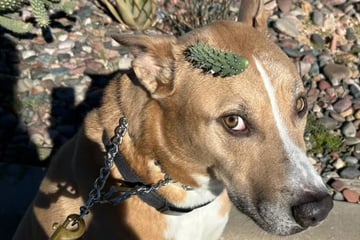Dog lice: Symptoms and how to treat
Most would assume that a dog has fleas if it starts to intensively scratch and itch itself, but that's not necessarily the case. Can dogs get lice, and if so, how dangerous are they, and what's the treatment?
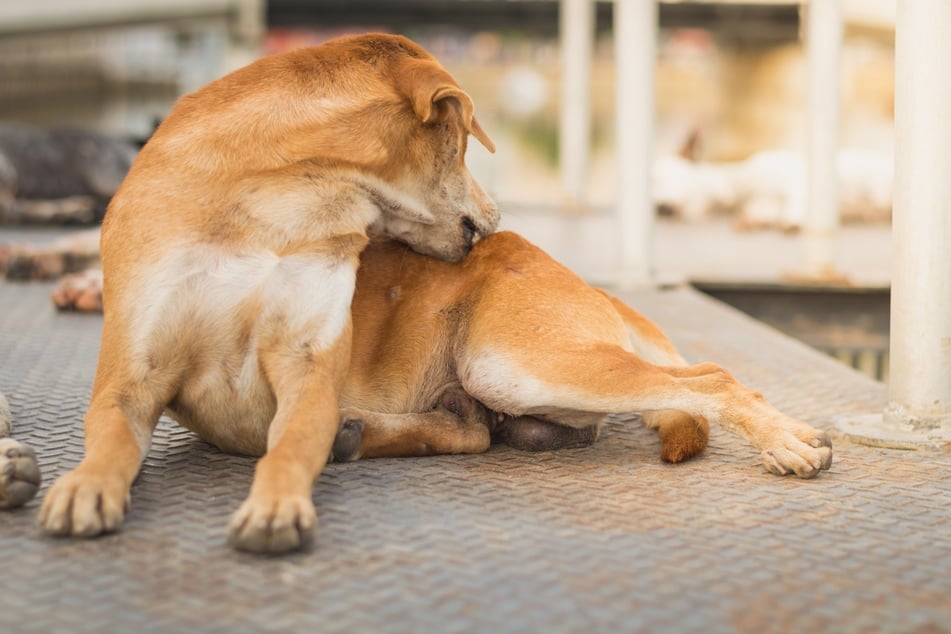
Our darling doggos get attacked by all sorts of different critters, but few are more annoying or troublesome than parasites that can jump from dog to dog.
Lice are, potentially, one of those very parasites and, if real, a very serious problem. So can dogs get lice, and if so, what symptoms should you look out for, what causes them, and how do you get rid of dog lice?
Important: If you are concerned about your doggo's health, you need to get advice from your veterinarian and not rely on articles like this for medical advice. Be cautious – it never hurts to ask.
Can dogs get lice?
Yes, dogs can be infested with lice of different types and varieties. In particular, the risk of lice greatly increases in a dog that is unkept and unclean or has a health condition that predisposes it to lice. Most types of lice are present in North America and will attack dogs, though the heterodoxus spiniger is relatively rare and unlikely to be a problem.
There are three different types of dog lice, each with different habits and characteristics. The most common lice are the linognathus setosus and trichodectes, blood-sucking and biting lice, respectively. The aforementioned heterodoxus is particularly nasty as it bites and then feeds on blood.
Lice are small and flightless insects that live in your dog's fur and will continue to move around, feeding and laying eggs throughout the host's hair. The most common sign of lice is the eggs, often referred to as "nits," that they leave behind, which are easily recognizable.
Dogs can get lice just as easily as we can and, in many cases, get them more often due to their closer proximity to the ground and lack of sanitation habits. They are unpleasant but not dangerous.
What does dog lice look like?
Lice are insects of around 0.05 inches in size, with highly efficient jaws that can bite into the skin they sit on. In themselves, it is very hard to recognize the lice as they are extremely small and blend into your hair. Some species suck the blood out of the infested dog, while others feed on the skin flakes and hair of your four-legged friend.
The best way to recognize that your dog has lice is to look for "nits." These little eggs appear in the form of tiny white specks in the fur which fall out when you pet them – similar to dandruff.

Symptoms of dog lice
Dogs that are suffering from a lice infestation will experience some pretty nasty side effects. These tiny creatures can nest and multiply easily, making an infestation spread rapidly and cover most of a dog's coat. Seeing as lice suck blood or bite at the surface of your dog's skin, the symptoms are often more than just a simple itch – though they are not usually life-threatening.
Here are the most common symptoms of lice in dogs:
- Severe itching
- Restlessness and irritability
- Scaling of the skin
- Encrusted areas
- Hair loss
- Skin infections
- Sudden and unexpected twitching
There are, of course, other symptoms that could indicate a lice infestation. If you suspect that one is taking place, the vet should be your next port of call.
Dog lice causes

Dogs will catch lice if they come into contact with said lice and the insects transfer into a dog's hair. This can be done via a range of different approaches but is usually caused by an interaction between a dog without lice and a dog with lice. They can also spread from other animals onto your dog or tracked in on your shoes.
It is worth noting that dogs who stay at home more and don't have much interaction with other animals and doggos are less likely to face an infestation – but it's not impossible.
Following are a number of factors that increase the likelihood of your dog getting infested with lice:
- Young dogs are more likely to be infested (puppies and juniors)
- Immunocompromised dogs
- Old dogs (seniors, from about eight years of age onwards)
- Stray dogs
- Hunting dogs (due to increased contact with other animals)
- Unclean or badly groomed dogs
Mitigation is incredibly important, but in many cases, it won't save your dog from an infestation of lice. As a result, knowing how to treat dog lice is very important for any dog owner.
Can my kid get lice from my dog?
Lice are host-specific, which means that they can only be transmitted between dogs. Consequently, neither other animal species nor humans can be infected by dog-specific lice. There are, however, cases in which lice from other animals get transferred onto dogs.
In order for a lice-infested dog to transmit the parasites to other dogs, there must be physical proximity. Playing together can be sufficient for this, as the lice crawl from body to body. As a result, owners should make sure that the dog that their canine companion is hanging with is lice-free.
Simply put: No, your child cannot get lice from your dog. It is more likely to go the other way around, but still extremely rare and unlikely. As a result, try not to worry too much.
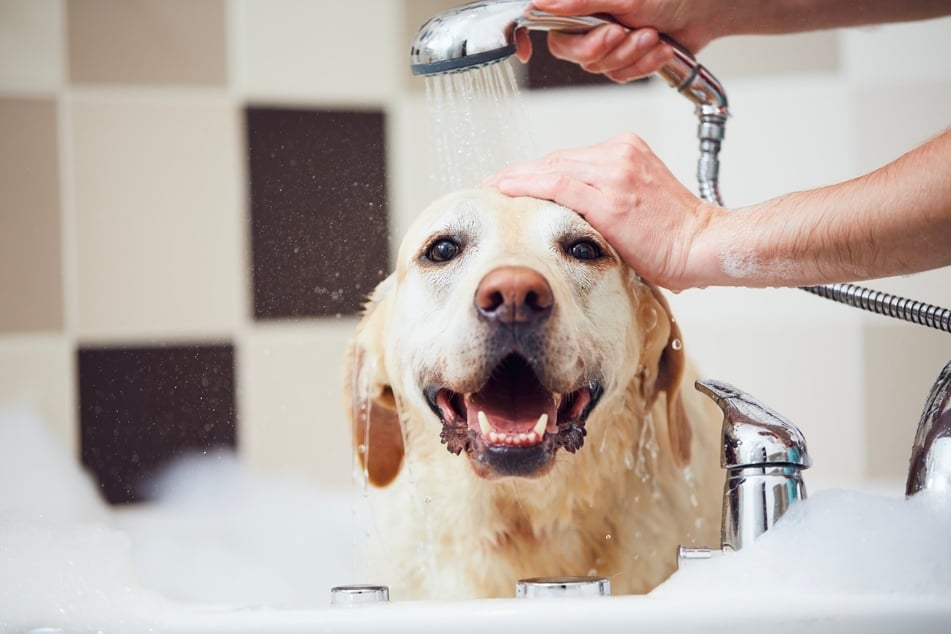
How to get rid of dog lice at home fast: Treatments
The most important thing you do after realizing your dog has a lice or nit infestation is to take it immediately to the vet. There are all sorts of home remedies to be found across the internet, but we truly believe that the best course of action is not to follow a random person's advice but the guidance of a trained medical professional.
In some cases, home remedies can damage a dog's health and be extremely harmful to the little dudes. You don't know whether an internet theory will work, and you don't know whether it might be toxic or trigger dog allergies. Don't take the risk.
In most cases, your veterinarian will prescribe one or more of the following treatments for dog lice:
- Medication
- Special dog shampoos
- Bathing cures
- Powders
- Sprays
Depending on the severity of the infestation, your vet will decide which medication is best for the dog. It is then important to follow the prescription exactly and avoid re-infection.
How to avoid dog lice
We highly recommend a preventative approach to dealing with dog lice. There are a variety of things that you can do that are assured to lessen, though not entirely remove, the risk of a lice infestation. Many of these steps are incredibly simple and quick.
Here are a few ways to help avoid and prevent dog lice infestations:
- Treat your dog well, including regular grooming, nail trimming, and washing
- Avoid contact with dogs that are infested with lice, or don't let your lice-ridden dog near other dogs to lessen the spread
- Keep your home and your dog's environment clean (dog bed, blankets, pillows, towels, carpets, etc.)
- Use special insecticide sprays against any remaining nits and lice after an infestation
- Make sure that the environment, as well as the dog itself, is cleaned at least every two weeks
As with any of these matters, when it comes to medical stuff, you should always consult your vet before taking action. You are not a professional, and it's always better to be safe than sorry.
Cover photo: 123RF/Rachenphotographer
